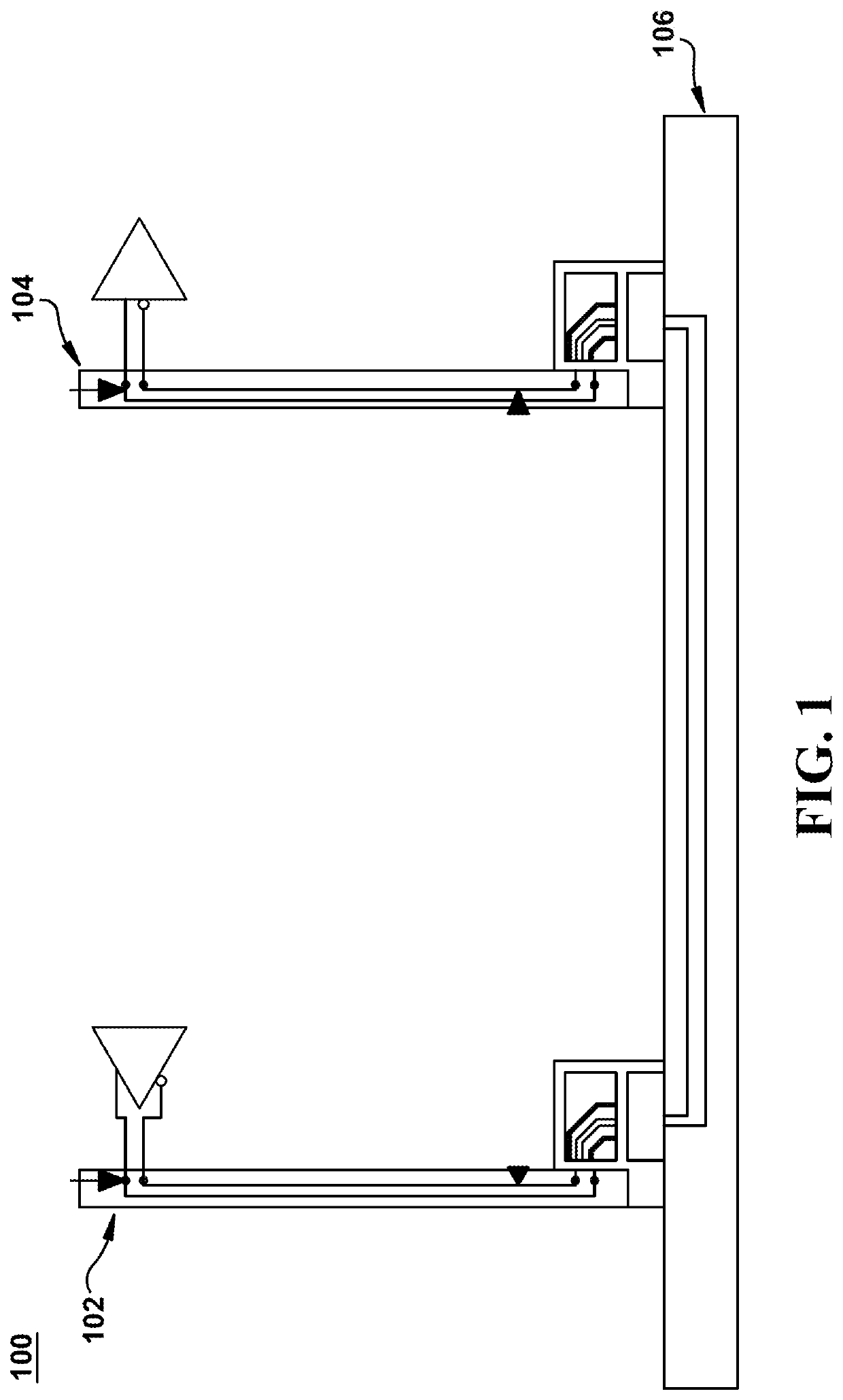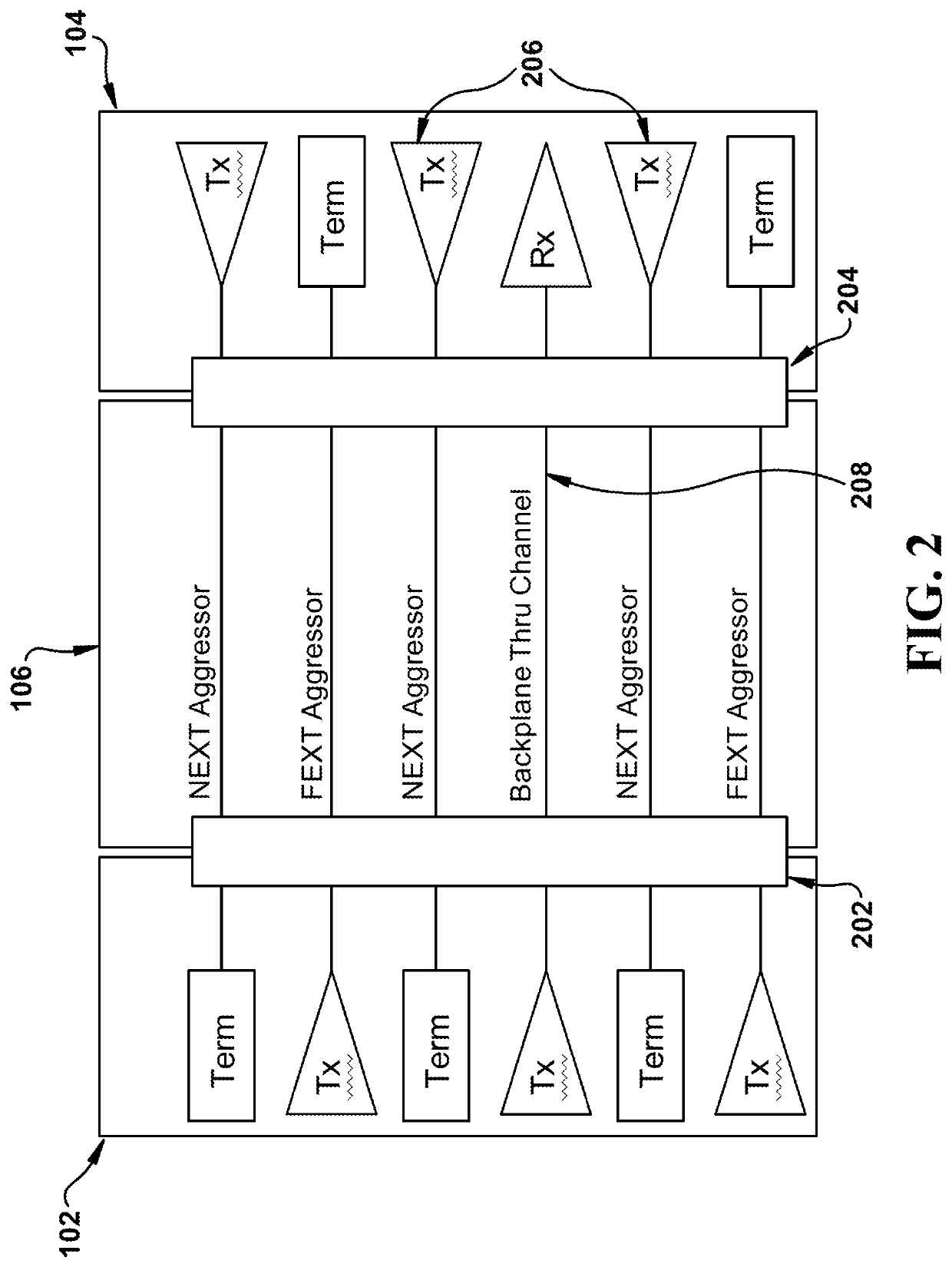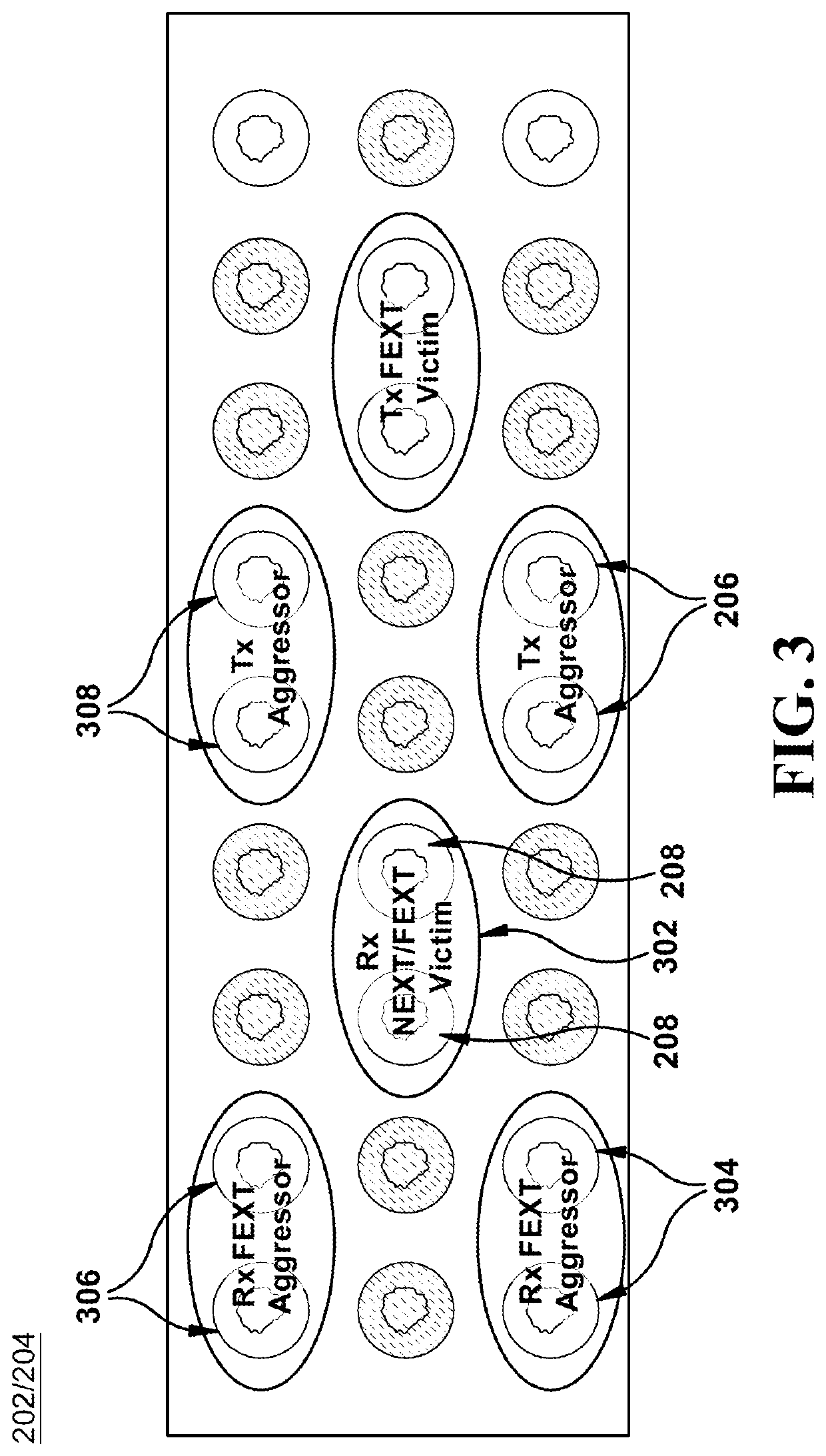Method and apparatus for near-end crosstalk reduction
- Summary
- Abstract
- Description
- Claims
- Application Information
AI Technical Summary
Benefits of technology
Problems solved by technology
Method used
Image
Examples
Embodiment Construction
[0042]Examples will now be described more fully hereinafter with reference to the accompanying drawings in which example embodiments are shown. However, aspects may be embodied in many different forms and should not be construed as limited to the embodiments set forth herein. Moreover, certain terminology is used herein for convenience only and is not to be taken as a limitation. For example, the use of the term “NEXT cancellation” does not necessarily mean a complete cancelling or elimination of NEXT coupling, but may also be intended to mean a reduction or a substantial reduction of NEXT coupling, depending on the specific implementation.
[0043]Elements of a signal path through a printed circuit board (PCB) can include, but are not limited to, device packages, connectors, conductive traces, vias, such as signal vias and reference vias (e.g., power vias, ground vias, etc.), and conductive elements. Any of these elements can compromise the signal integrity. As signals are exchanged a...
PUM
 Login to View More
Login to View More Abstract
Description
Claims
Application Information
 Login to View More
Login to View More - R&D
- Intellectual Property
- Life Sciences
- Materials
- Tech Scout
- Unparalleled Data Quality
- Higher Quality Content
- 60% Fewer Hallucinations
Browse by: Latest US Patents, China's latest patents, Technical Efficacy Thesaurus, Application Domain, Technology Topic, Popular Technical Reports.
© 2025 PatSnap. All rights reserved.Legal|Privacy policy|Modern Slavery Act Transparency Statement|Sitemap|About US| Contact US: help@patsnap.com



